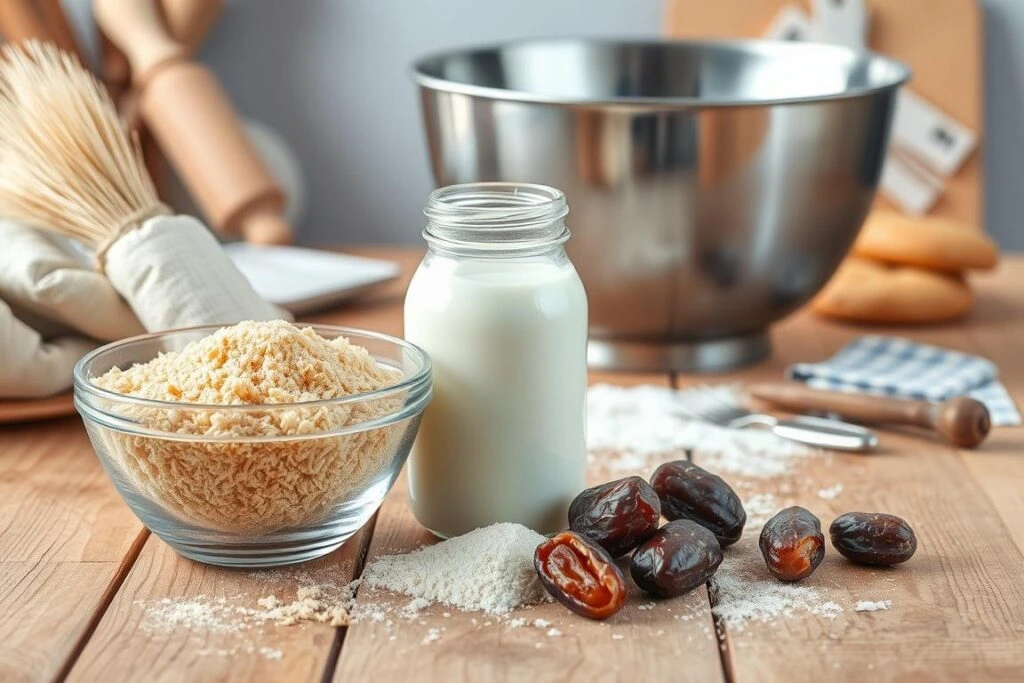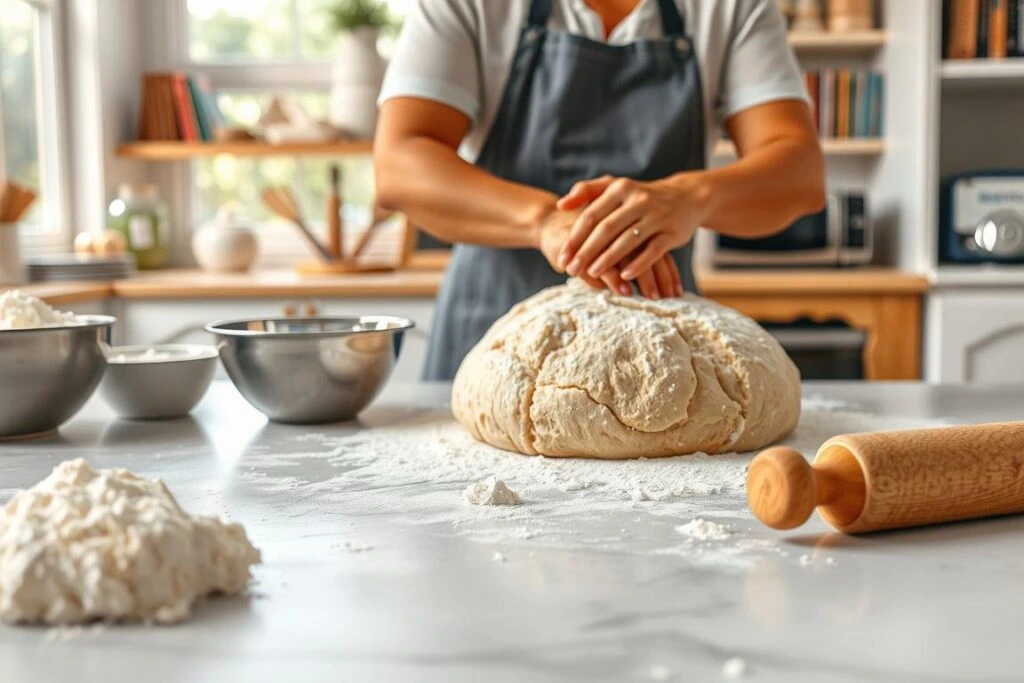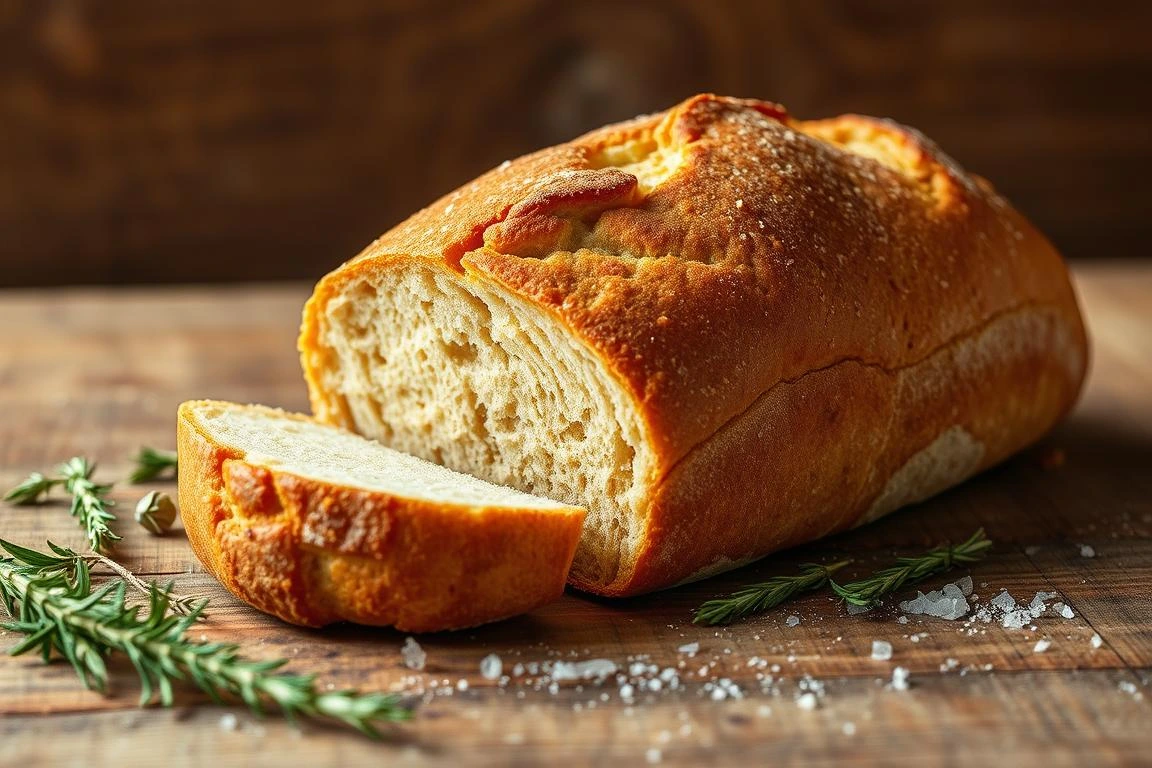There’s something deeply comforting about the smell of freshly baked dough wafting through your kitchen. It’s a reminder of warmth, simplicity, and the joy of creating something from scratch. If you’ve ever craved that experience but wanted a plant-based twist, you’re in the right place.
This vegan bread recipe is inspired by the art of Italian pizza-making, transformed into a soft, fluffy loaf. With just a handful of ingredients and minimal effort, you can enjoy a crispy exterior and a tender interior that’s perfect for any meal.
Whether you’re new to baking or a seasoned pro, this recipe is designed to be approachable and rewarding. It’s budget-friendly, requires no fancy equipment, and delivers a flavor that’s hard to resist. Let’s dive into the process and discover how easy it is to make this vegan bread at home.
Table of Contents
Introduction to Vegan Bread and Its Benefits
Baking at home brings a sense of accomplishment and connection to your food. When you choose plant-based options, you’re not just making a loaf—you’re embracing a healthier, more sustainable lifestyle. This approach allows you to control the ingredients, ensuring every bite is wholesome and nourishing.
Why Choose Plant-Based Baking?
Opting for a homemade loaf offers more than just superior taste. It’s a chance to reduce your environmental footprint while enjoying fresh, preservative-free food. Many experienced authors highlight how simple, accessible ingredients can create something truly special. Even a few minutes spent activating dry yeast can make a world of difference in your final product.
Health and Sustainability Advantages
Plant-based baking aligns with wellness goals and eco-friendly practices. Here’s why it’s a smart choice:
- Control Over Ingredients: You decide what goes into your loaf, avoiding unnecessary additives.
- Lower Environmental Impact: Plant-based options use fewer resources compared to traditional baking methods.
- Beginner-Friendly: This approach is simple and accessible, even for those new to baking.
By embracing this method, you’re not just baking—you’re making a positive impact on your health and the planet.
Essential Ingredients and Equipment for Vegan Bread
Creating a homemade loaf starts with gathering the right tools and ingredients. The process is simple, but having the essentials ensures consistent results every time. Let’s explore what you’ll need to get started.

Key Ingredients: Flour, Yeast, and More
The backbone of any great bake is quality ingredients. Start with flour, which provides structure and texture. You’ll need about 3 to 3 1/2 cups of all-purpose flour for this recipe. Active dry yeast is another must-have, as it helps the dough rise. Use 2 1/4 teaspoons (one packet) for best results.
Warm water is crucial for activating the yeast. Aim for a temperature of around 110°F—too hot, and it can kill the yeast. A teaspoon of sugar helps feed the yeast, while a pinch of salt enhances flavor. Optional additions like melted plant-based butter can add richness to your loaf.
Choosing the Right Equipment
You don’t need fancy tools to bake a great loaf. A sturdy mixing bowl is essential for combining your ingredients. A lid or clean kitchen towel helps maintain the right humidity during the rising process. Measuring cups ensure accuracy, especially when working with flour and water.
While not mandatory, a dutch oven can elevate your bake. It traps steam, creating a crispy crust and tender interior. If you don’t have one, a baking sheet works just fine. The key is to use what you have and focus on technique.
Optional Enhancements for Extra Flavor
If you want to take your loaf to the next level, consider adding optional ingredients. Herbs like rosemary or thyme can infuse your dough with aromatic flavors. A sprinkle of seeds on top adds texture and visual appeal. These small tweaks can make your bake uniquely yours without complicating the process.
Remember, the best bakes come from a combination of quality ingredients, the right tools, and a little creativity. With these essentials, you’re well on your way to mastering the art of homemade baking.
Step-by-Step Guide: Vegan Bread Recipe
Mastering the art of baking starts with understanding the basics of yeast activation. This step ensures your dough rises perfectly, giving it a light and airy texture. Follow these simple steps to create a loaf that’s both delicious and visually appealing.

Activating Yeast and Preparing the Dough
Begin by activating the yeast. Combine 2 1/4 teaspoons of active dry yeast with 1/2 cup of warm water (around 110°F) and a pinch of sugar. Let it sit for 5-10 minutes until it becomes frothy. This step is crucial for ensuring your dough rises properly.
In a large bowl, mix 3 1/2 cups of flour with the activated yeast mixture. Add a pinch of salt and 1/2 cup of non-dairy milk. Stir until the ingredients come together, forming a sticky dough. Knead the dough for 10-15 minutes until it becomes smooth and elastic.
Rising Techniques and Shaping the Loaf
Place the dough in a lightly oiled bowl, cover it with a clean kitchen towel, and let it rise in a warm spot for about 1 hour. The dough should double in size. If your kitchen is cool, you can place the bowl in a gently warmed oven to speed up the process.
Once the dough has risen, gently punch it down to release any air bubbles. Shape it into a loaf and place it in a 9×5-inch loaf pan. Cover it again and let it rise for another 35-60 minutes until it nearly doubles in size.
Preheat your oven to 350°F. Bake the loaf for 25-30 minutes, or until the top is golden brown. To check if it’s done, insert a clean knife into the center—if it comes out clean, your loaf is ready. Let it cool for at least 45 minutes before slicing.
Expert Tips for Perfecting Your Homemade Vegan Bread
Perfecting your bake requires attention to detail and a few expert tricks. Whether you’re a beginner or a seasoned baker, these tips will help you achieve a flawless loaf every time. Let’s dive into the key factors that make a difference.
Temperature and Timing Insights
Temperature plays a crucial role in baking. Ensure your dough rises in a warm spot, ideally around 75°F. If your kitchen is cooler, place the bowl in a gently warmed oven for about an hour. This helps the dough double in size.
Timing is equally important. Let the dough rise for the full recommended hour during the first phase. For the second rise, 35-60 minutes is ideal. Patience here ensures a light and airy texture.
Troubleshooting Common Baking Issues
If your dough isn’t rising, check the yeast. It should be frothy after activation. A light coating of oil on the bowl prevents sticking and helps the dough rise evenly. Place the dough in the center of the oven for even heat distribution.
For a crispy crust, transfer the loaf to a cooling rack immediately after baking. This prevents the bottom from becoming soggy. If the top is browning too quickly, cover it with foil during the last 10 minutes.
Experiment with slight variations in timing. Every extra hour or minute can improve texture if managed properly. These small adjustments can make a big difference in your final product.
Creative Twists and Serving Ideas for Your Vegan Bread
Transform your basic loaf into a culinary masterpiece with creative twists and serving ideas. Whether you’re looking to experiment with flavors or find new ways to enjoy your bake, these tips will inspire you to think outside the box.
Flavor Variations and Ingredient Substitutions
Adding a personal touch to your loaf is easier than you think. Try incorporating shredded potato for a moist, hearty texture. For a rich, buttery flavor, use a plant-based alternative in place of traditional butter. A pinch of herbs or spices can elevate the taste without complicating the process.
Experiment with different types of rolls or mini versions for variety. Adjust seasoning measures (like tsp of garlic powder) to suit your preferences. These small changes can make a big difference in the final result.
Serving Ideas for Every Occasion
Pair your loaf with a warm bowl of soup for a comforting meal. Use it as a base for open-faced sandwiches topped with avocado, hummus, or fresh veggies. For a crispy crust, bake it in a dutch oven to trap steam and create that perfect texture.
Transform your creation into rolls or mini loaves for snacks or gatherings. Serve it alongside other plant-based dishes for a complete, satisfying experience. The possibilities are endless when you let your creativity shine.
See more : The Ultimate Guide to the Best French Bread Recipe
Conclusion
Whipping up a fresh, crusty loaf at home is simpler than you think. This easy method lets you enjoy a warm, comforting creation any day of the week. Whether you’re baking for a quick snack or a hearty meal, the process is straightforward and rewarding.
Using vegan butter can elevate the flavor and texture, making it a delicious addition to your plant-based kitchen. The best part? You don’t need fancy tools to achieve great results. With the tips provided, making bread without specialized equipment is entirely possible.
Feel free to revisit the step-by-step guide and expert advice whenever you need a refresher. From a warm biscuit to a full loaf, this versatile creation is a celebration of simple, delicious comfort food. Enjoy it your way and savor every bite!
FAQ
Can I make this without yeast?
What’s the best flour to use for a crispy crust?
How do I store homemade loaves to keep them fresh?
Can I add other ingredients like herbs or seeds?
Why is my dough not rising properly?
Can I freeze the dough for later use?
How do I achieve a golden, crispy top?
What’s the best way to slice the loaf without squishing it?
Have You Tried Our Recipe?
There are no reviews yet. Be the first one to write one.

